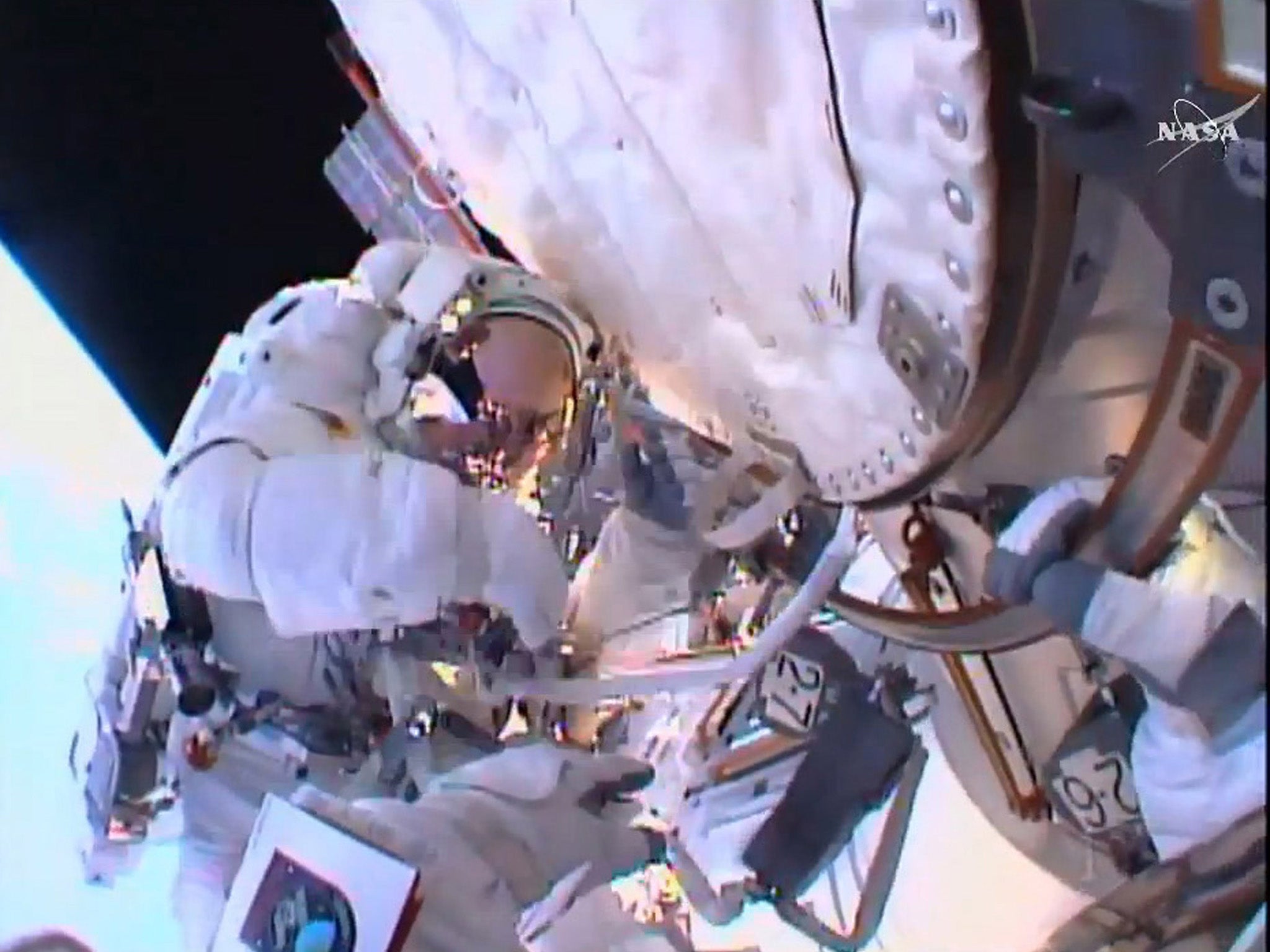Tim Peake: Millions watch British astronaut's spacewalk as mission ends earlier than expected
The mission had to be terminated early due to the build of a small water bubble in his colleague's helmet

With a spanner in this hand and the world at his feet, Tim Peake has become the first British astronaut flying under the Union Jack to take a walk in space – and if he felt the pressure of being watched by millions on the ground, the 43-year-old helicopter test pilot from Chichester didn’t show it.
David Cameron and Sir Paul McCartney each sent messages of support via Twitter, while Peake’s wife, Rebecca, thanked him for “taking our boys into the vacuum of space” after she spotted him wearing a photograph of their two young sons on his left forearm.
Peake and fellow astronaut Tim Kopra were charged with the primary task of replacing a defective voltage regulator, a box the size of a small suitcase attached to the far end of a long truss extending out on the starboard side of the International Space Station.
However, the six-hour “extravehicular activity” (eva) had to be terminated early at 4 hours 43 minutes due to the build of a small water bubble in Kopra’s helmet – a safety precaution after a previous water leak in 2013 was later traced to the loss of coolant in the space suit.
Although the two astronauts were ordered back to the airlock earlier than anticipated, they were still able to carry out other tasks, including the fixing of a vent and the partial laying out of nearly 30 metres of cable for servicing future commercial and cargo vehicles to the space station.
Just before 1pm on 15 January, Kopra was first to emerge from the airlock into the vacuum of space, closely followed by Peake. When the two Tims met up again on the outside of the station trafelling at 17,500mph Kopra greeted his colleague: “Hi Tim, how ya doin?” To which Peake replied: “Fine, just hanging out.”
A Nasa controller spotting the Union Jack on Peake’s spacesuit, called out to him over the radio: “Tim, it’s really cool to see the union flag go out. It’s explored all over the world, now it’s explored space.”
Peake replied: “It’s great to be wearing it, a real privilege.”
The first and most important stage of the space-walk involved the replacement of a defective “sequential shunt unit”, one of the eight voltage regulators controlling electrical power from the space station’s eight solar arrays.
Since the unit failed on 14 November, the space station was operating under seven-eighths of its total potential power. The failed unit was successfully substituted by “Dusty”, a replacement module that has been on board the space station since 1999.
Because of the risk of electric shocks, the operation had to be undertaken during the 31 minutes when then station slipped into the darkness of night when the dark shadow of Earth cuts off power to the solar arrays.
The two Tims had to make their way using the hand rails to the far end of the starboard truss of the space station, where the defective shunt unit was located. American Tim Kopra, on his third space-walk, was charged with the task of unlocking the single bolt that attached the unit to the station.
Each turn of the wrench was carefully monitored by Mission Control in Houston, anxious for Kopra not to overdo the torque and strip the thread of the single bolt holding the defective voltage regulator in place.
As day turned to night, and Mission Control confirmed the powering down of the solar arrays, the two space walkers successfully replaced the defective voltage regulator. Once the sun rose again, Mission Control confirmed that it was working perfectly given full power once more to the space station.
Despite its early end, the mission was declared a success.
Join our commenting forum
Join thought-provoking conversations, follow other Independent readers and see their replies
Comments
Bookmark popover
Removed from bookmarks